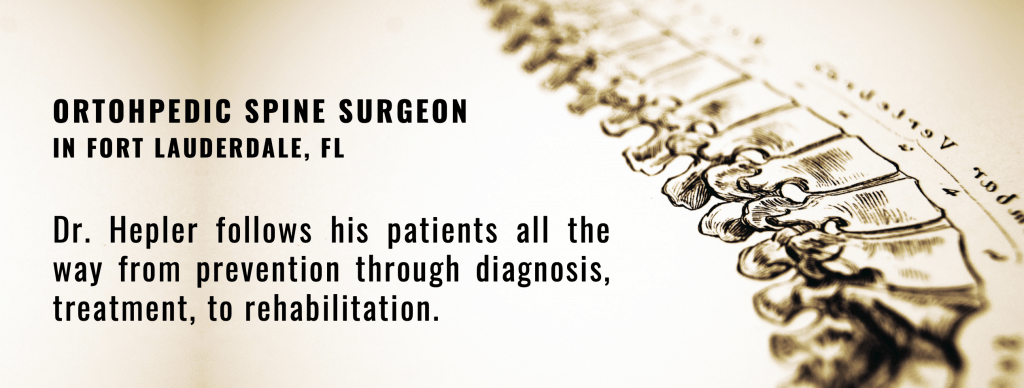Life after spinal fusion
If you are contemplating undergoing spine surgery, specifically a spinal fusion, then you may be wondering what kind of quality of life you can expect afterward. The purpose of this blog post is to shed some light on this.
What is a spinal fusion?
Put simply, a spinal fusion is an operation that creates a solid union between 2 or more vertebrae. In order to better understand this, it can help to first take a look at the anatomy involved (below).
Anatomy
Our spine is a remarkable combination of strong bones, ligaments, and tendons. There are also large muscles and nerves. It is designed to be incredibly strong and highly flexible. We have 33 individual and interlocking bones that form the spinal column. These vertebrae are split into 4 sections. The cervical section, the thoracic, lumbar and the sacrococcygeal.
(Source: Image of posterior spinal anatomy)
The different vertebrae vary slightly depending on where they are in the spine. This is because the spinal sections do different jobs. The area we are going to look at is the lumbar region. These are 5 very large vertebrae bodies. The lumbar vertebrae carry all the upper body’s weight, this makes it an area where problems may occur.
Causes of lumbar problems
There are several causes of lumbar problems. Firstly, there is degenerative disc disease. This is where the discs between the vertebrae have deteriorated, causing nerve impingement or where bone rubs against bone.
Another cause is a condition called Spondylolisthesis. This is whereby one of the fibrous discs has slipped forward and out of place. The most common reason for this to occur is repetitive trauma or hyperextension of the lower back.
Symptoms of lumbar problems
The most common symptom tends to be a low-grade, continuous pain around the disc area. Occasionally that may flare up into a severe debilitating pain.
With lumbar disc degeneration, pain is often felt in the hips, buttocks or down the leg. This is called Sciatica or Radiculopathy.
Treatment options
Once a diagnosis has been confirmed then your doctor will look for the appropriate line of treatment.
Non-surgical treatments
- Pain medications can relieve inflammation that causes the pain. Aspirin, Ibuprofen and Diclofenac are commonly used to good effect. There are also muscle relaxants and narcotic painkillers. These can be addictive and will be used with caution with your doctor’s support.\
- Heat and Ice treatment is a proven tool to ease pain relief.
- Physical therapy and massage may be helpful to some people. It can reduce tension and spasms in the lumbar back muscles.
- A steroid injection around the vertebrae may alleviate pain, sometimes this is effective for up to one year.
- Read more about non-operative treatment options for spine injuries and conditions.
Unfortunately for some people these conservative treatments do not give them the relief they need, in which case the patient may be a good surgical candidate.
Surgical treatments
If, after 6 months of non-surgical treatment there is no improvement, then surgery could be the best available treatment option. One type of surgery is spinal fusion.
Spinal fusion
There are several types and variations of fusion surgery, but it is mainly an open or a minimally invasive operation.
An open fusion
involves a large incision in the back to expose the spine. The surgeon then cuts through and retracts the thick spinal muscles covering the spine. The surgeon will then use harvested bone graft to pack around the disc area. The bone is normally taken from the patient’s own pelvis, so a smaller operation is done there. This bone graft stimulates bone growth and healing. By increasing the bone volume, it helps the 2 vertebrae to fuse together as one. To support the fusion initially the surgeon will put in a mix of plates or screws to stabilise the discs. This is called internal fixation.
The second type of surgery is called Minimally invasive fusion.
Using innovative technology, a fusion of two vertebrae can be achieved by using two small poke-hole incisions. A surgeon will then use either an endoscope or microscope down the first hole. This allows the surgeon to see inside the body. He can then use small surgical tools via the second portal to carry out the fusion.
A revolutionary piece of equipment is the Tubular Retractor. This involves progressive dilatation of the soft tissues around the vertebrae via a ½ inch incision. This avoids having to cut directly through the muscles. By using this retractor, the surgeon can create a space whereby they can then use the endoscope or microscope method easily. Once the procedure is completed, they simply remove the retractor allowing the tissues to come back together.
Recovery from minimally invasive surgery compared to the traditional method is much shorter. You may be looking at 3-4 months with the open procedure whereas just 3-4 weeks with the minimal technique.

Learn more about spinal fusion from our spine surgeon in Palm Beach County
If you are suffering with your lumbar spine, seek advice. The advice should be with someone who is experienced in that field. You want an expert to review your condition and your options going forward.
Dr Matthew Hepler has over 17 years’ experience in treating injuries and conditions of the spine, including both operative and non-operative treatment options. Read more about our orthopaedic spine surgeon in Fort Lauderdale and Delray Beach.
The material contained on this site is for informational purposes only and DOES NOT CONSTITUTE THE PROVIDING OF MEDICAL ADVICE, and is not intended to be a substitute for independent professional medical judgment, advice, diagnosis, or treatment. Always seek the advice of your physician or other qualified healthcare providers with any questions or concerns you may have regarding your health.



